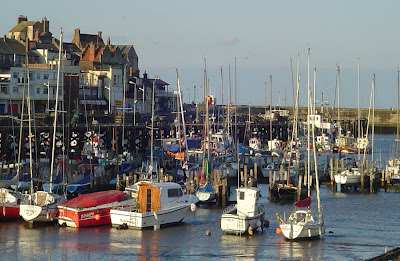It first appears as a tiny speck on the horizon, its color almost blending into the sea and sky so that we’re not quite sure if we really saw it or not. We wait a couple of minutes and decide it’s definitely getting bigger. The timing is right, and we keep watching. Now it is unmistakably a ship, and it’s bigger than any other vessel in the tiny, sheltered harbor before us. If this ship were anchored offshore for any length of time, the local fishing boat captains would be taking tourists out to gawk at her (this has actually happened in the past). But the ship has come for us – she is an impressive beauty who has sailed a very long way from home to play a critical role in the search for the BHR. For me, this first sighting of our vessel is always one of the highlights of a new mission – to know that people believe so strongly in what we’re doing that ships have been mobilized on our behalf, and crews are inspired and ready to go.
We are picked up pierside by a much smaller boat, and enjoy an exhilarating 1-mile ride out to the mother ship, our luggage covered in black garbage bags and computers encased in huge ziploc baggies in the event we should take a wave over the side. Transport by small boat is necessary because of the extreme tidal fluctuations on the east coast of England. There are very few ports where the water is deep enough for a medium-to-large-sized ship to come into port. Many of the harbors in this area are known as “dry,” meaning when the tide goes out, there are boats left sitting in the mud until the tide comes in again and re-floats them, like in this photo. It’s nature’s version of drydock, and is just one of the many factors we take into account when planning a mission.
